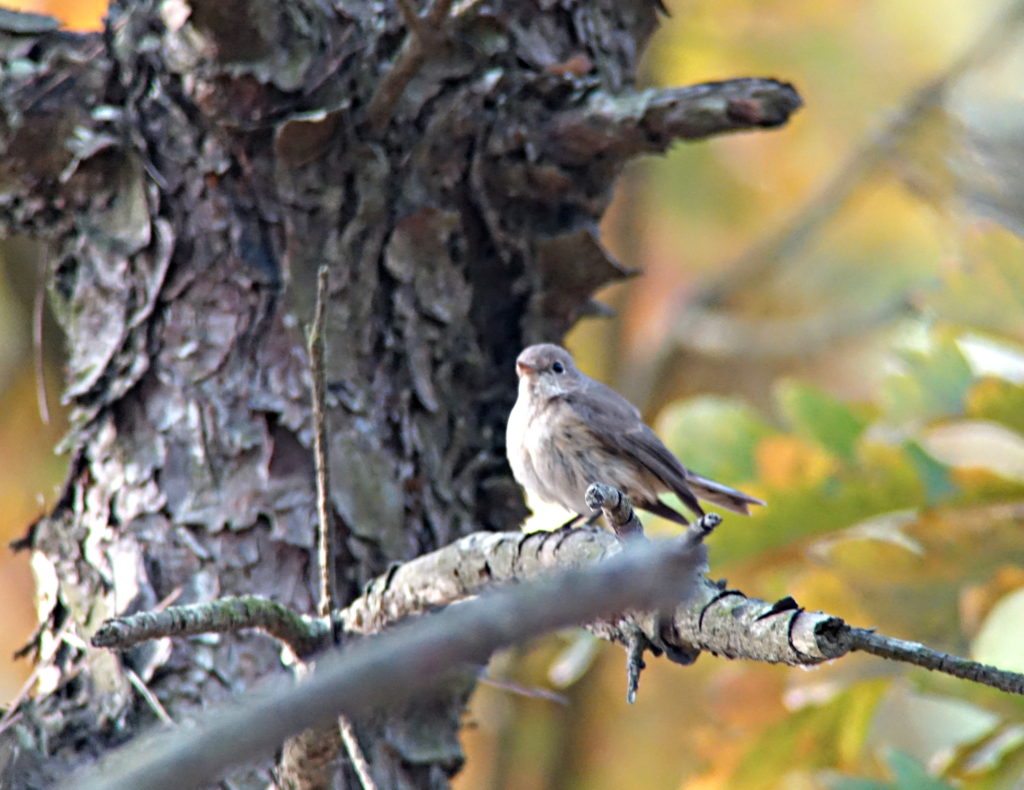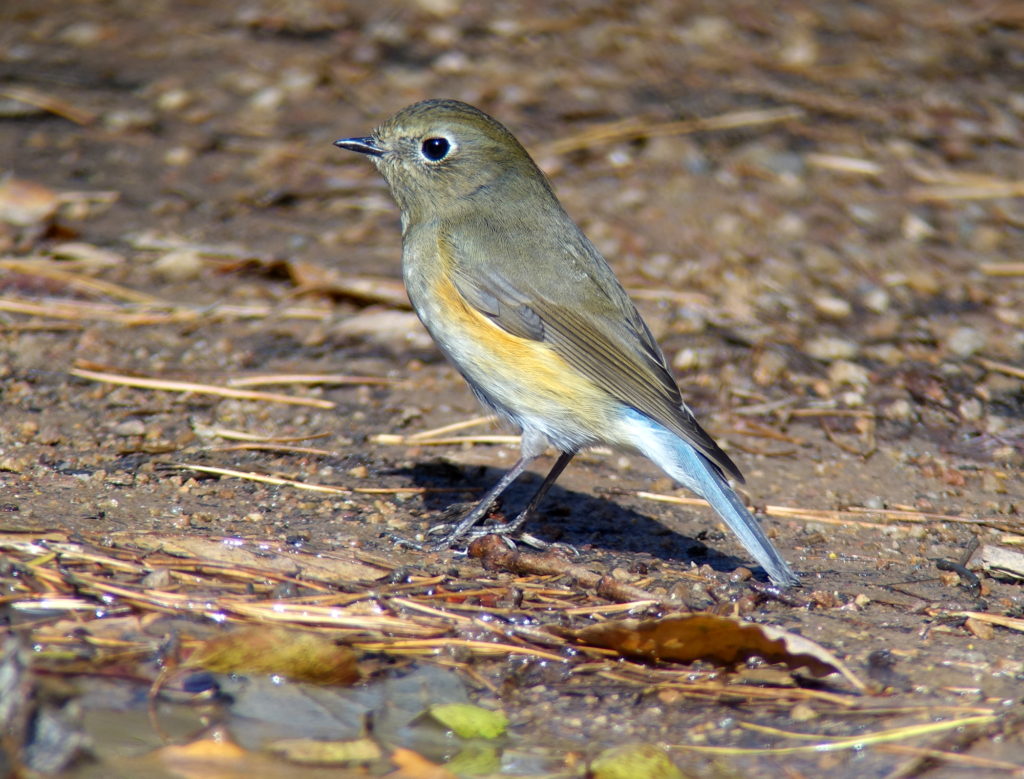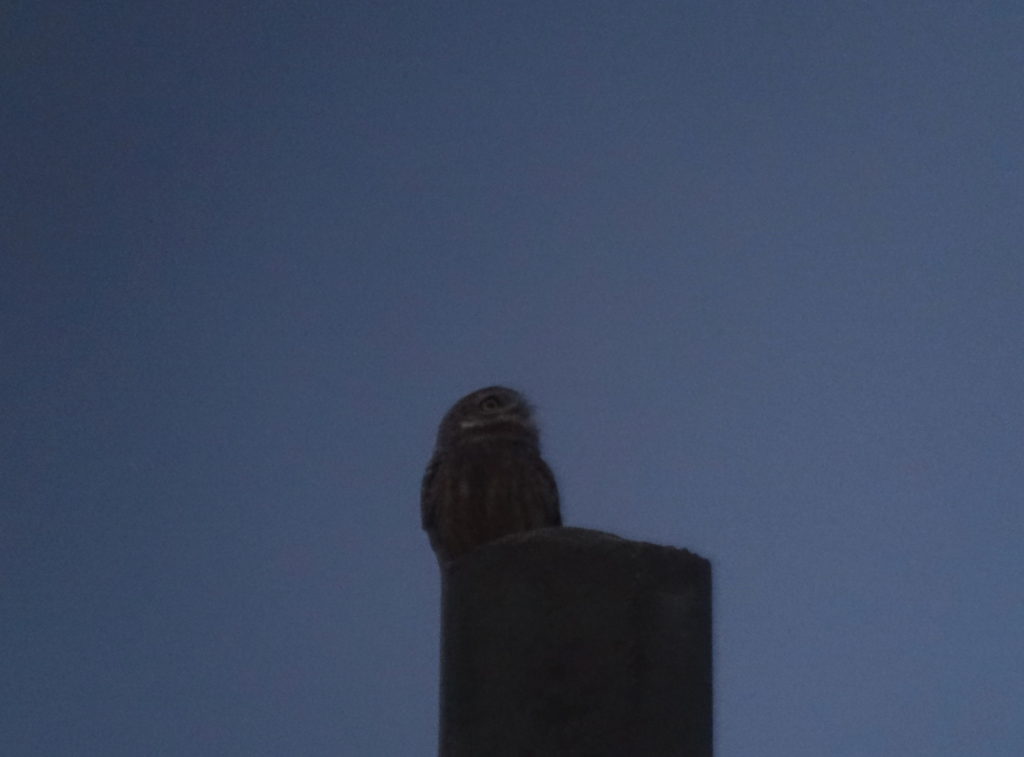Bird News from Nial Moores
On November 10th, a (brief) return trip to Baekryeong to survey the tail-end of autumn migration and to improve understanding of the impacts of the road through Hwadong wetland.
The day started with good views from the ferry of 17 Ancient Murrelet seen near Socheong and a late Streaked Shearwater.
In only three hours in Jincheon, 56 species were logged with Brambling (250) and Rustic Bunting (200+) the most numerous, and the highlight a highly vocal and mobile Red-breasted Flycatcher – mostly flitting high up in amongst the canopy (behaviour rather unlike most Taiga Flycatchers in Korea).

 Red-breasted Flycatcher Ficedula parva © Nial Moores
Red-breasted Flycatcher Ficedula parva © Nial Moores
Other birds of note included nine American Scoter, a Short-eared Owl, 5+ Yellow-bellied Tit, a Hume’s Leaf Warbler, a Bluethroat and a calling Eurasian Treecreeper.
 Short-eared Owl Asio flammeus © Nial Moores
Short-eared Owl Asio flammeus © Nial Moores
Rain overnight with moderate westerlies was followed on November 11th by clearing skies and almost calm conditions, with survey concentrated in Yeonhwa Ri and Dumujin. Among 64 species logged, the best for the day was a group of eight Oriental Stork in sustained high flight going west.
 Oriental Stork Ciconia boyciana © Nial Moores. Seven of the flock of eight.
Oriental Stork Ciconia boyciana © Nial Moores. Seven of the flock of eight.
Other birds of note including 1-2 Upland Buzzard, a very pale-looking stonechat (how to rule out Siberian Stonechat?) and several more “standard-looking” Stejneger’s, a Hume’s Leaf Warbler, a tailless taivana Eastern Yellow Wagtail, 25+ Hawfinch and 2-3 Pallas’s Rosefinch.
 Stejneger’s Stonechat Saxicola stejnegeri © Nial Moores
Stejneger’s Stonechat Saxicola stejnegeri © Nial Moores
Although pale and lacking (obvious?) dark streaks on the uppertail coverts, identification of this striking (and gorgeous!) presumed adult male was based on the strong orangey tone to the rump; the presence of what the late-and-great Martin Garner used to called “mascara streaks”, just visible on the flanks; a fair level of saturation in the upperparts and on the wing; and a rather large and strong-looking bill (both long and broad-based looking). Note: although cropped and sharpened, the image is otherwise unaltered.

 Very pale stonechat sp. © Nial Moores
Very pale stonechat sp. © Nial Moores
This individual (apparently an adult female based on the pattern of the primary coverts) is about as pale as they get here in Korea and also looked quite small-billed. At some angles, there looked to be quite a strong supercilium and although the lower part of the rump band is orangey, the colour seems to match many online images of Saxicola maura. The band also looks to extend a little further up the back, becoming gradually paler, than in many S. stejnegeri. I could not see any mascara streaks on the flanks or any dark markings on the uppertail coverts; and there was little Stejneger’s-rufous in the upperparts. Indeed, much of the greater covert bar was tipped whiteish and the tertial fringes were also very pale as shown by the images (which although cropped and sharpened were otherwise unaltered). Just how would such a bird be identified if seen in Europe? How should such birds be identified in this part of the world?
Numbers of several often-common late migrants (such as Red-flanked Bluetail and Siberian Accentor) remain unexpectedly low still, with only ten and two respectively logged throughout the day; and few birds were in Hwadong wetland – instead the goose flock was roosting out on the main reservoir.
 Red-flanked Bluetail Tarsiger cyanurus © Nial Moores
Red-flanked Bluetail Tarsiger cyanurus © Nial Moores
On November 12th in overcast conditions with westerlies, another day was spent only in Jincheon where 61 species were logged. These included a few lingering migrants (e.g. single Richard’s Pipit, five Yellow-browed Warbler, 2-3 Tristram’s and 4+ Chestnut-eared Buntings) and a few more late autumn-early winter migrants, including perhaps five Long-tailed and 3-4 Pallas’s Rosefinches and my personal first Japanese Waxwing (one heard only) and Eurasian Bullfinch of the autumn. Additional species of note included a Japanese Quail, 3+ Northern Goshawk, a minimum 65 Light-vented Bulbul, 320 Dusky Thrush and 700 Brambling (many of which were moving west shortly after first light).
 Chestnut-eared Bunting Emberiza fucata © Nial Moores, in one of the few rice-fields still-to-be harvested
Chestnut-eared Bunting Emberiza fucata © Nial Moores, in one of the few rice-fields still-to-be harvested
The day’s outstanding highlight was a presumed Western Water Rail heard at dawn and dusk (a series of up to five sharp notes given from a reed-bed, mixed in with a couple of other sounds – though no pig-squeals!- that match well several recordings from Europe on Xeno-Canto). Waiting until after dark in the hope of getting some kind of sound recording. I was amazed to hear a whoop call – and to see a Little Owl perched on top of a nearby pole, apparently calling to another bird out in the blackness.
 Little Owl Athene noctua plumipes © Nial Moores digiscoped almost an hour after sundown.
Little Owl Athene noctua plumipes © Nial Moores digiscoped almost an hour after sundown.
All images taken with a handheld Sony RXIII through a truly superb Swarovski scope…

